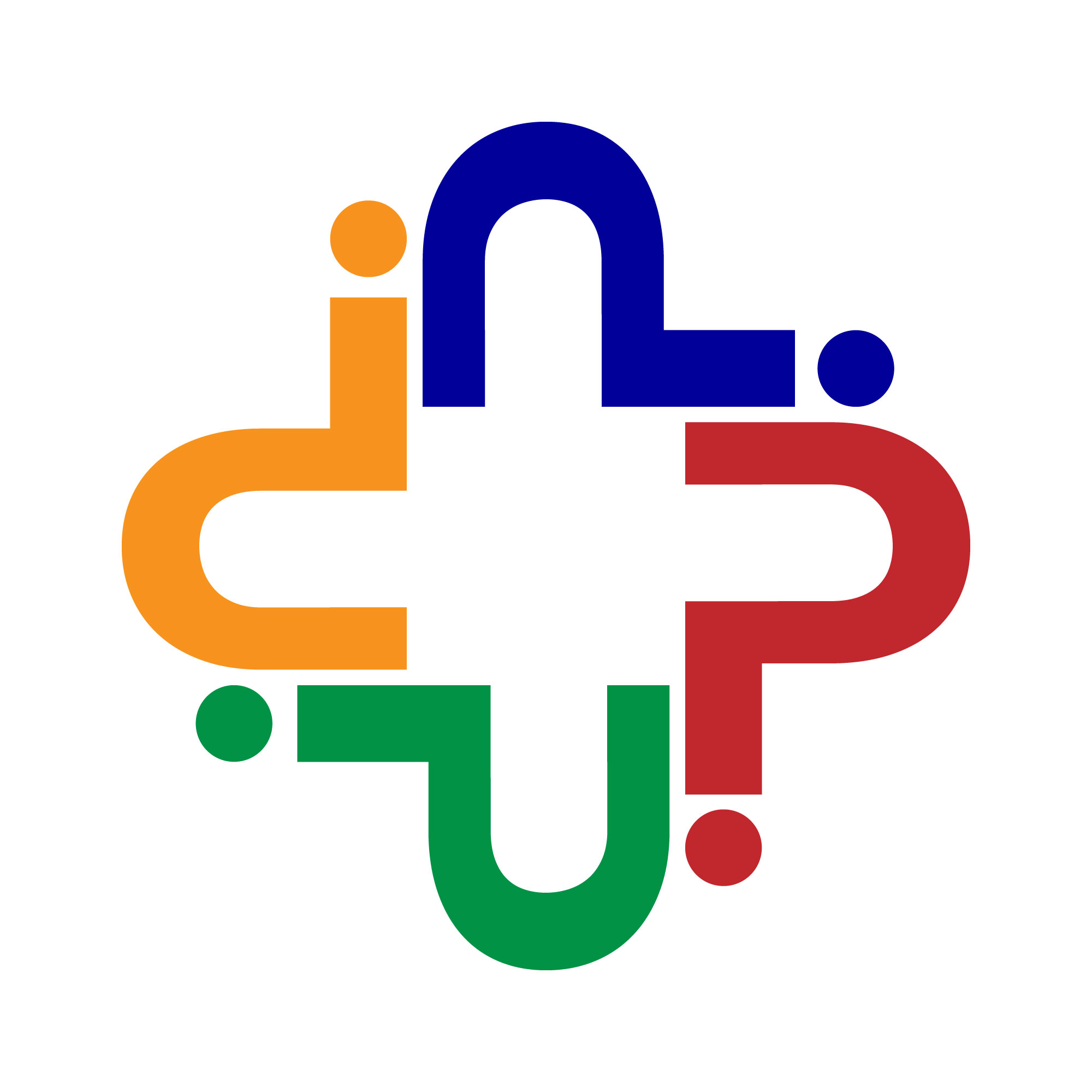AI chatbots are increasingly becoming indispensable tools across various industries, revolutionizing customer service, marketing, and operations. With advancements in artificial intelligence (AI) and natural language processing (NLP), chatbots are capable of understanding and responding to user queries with remarkable accuracy and efficiency.
According to recent studies, the global chatbot market is expected to reach $9.4 billion by 2024, with a compound annual growth rate (CAGR) of 29.7% from 2019 to 2024. This exponential growth underscores the growing importance of AI chatbots in modern business strategies.
Staying updated on the latest advancements in AI chatbot technology is crucial for businesses to remain competitive in today’s fast-paced digital landscape. As AI technology continues to evolve rapidly, new capabilities and functionalities are constantly being developed, enabling chatbots to deliver more personalized and efficient experiences for users.
In this blog, we’ll explore the growing significance of AI chatbots across industries and emphasize the importance of staying abreast of the latest advancements in AI chatbot technology to utilize their full potential for business success.
What is an AI chatbot?
An AI chatbot, or artificial intelligence chatbot, is a binary software program that uses artificial intelligence (AI) and natural language processing (NLP) technologies to simulate human-like conversations with users. These chatbots are designed to understand and respond to user queries or commands in natural language, allowing for interactive communication via text or speech.
AI chatbots are trained on vast amounts of data and programmed with algorithms that enable them to interpret user input, generate appropriate responses, and simulate intelligent conversation. They can perform a wide range of tasks, such as answering questions, providing recommendations, assisting with customer service inquiries, scheduling appointments, and even engaging in casual conversation.
Overall, AI chatbots aim to mimic human conversation patterns and behaviors to provide users with a seamless and intuitive interaction experience. They are widely used in various industries, including customer service, healthcare, finance, e-commerce, and more, to automate repetitive tasks, improve efficiency, and enhance user engagement.
Criteria for Evaluating AI Chatbots
When evaluating AI chatbots, several key factors should be considered to assess their effectiveness and suitability for specific use cases. These criteria encompass various aspects of chatbot functionality, usability, security, and scalability. Here are some essential factors to consider:
- Natural Language Processing (NLP) Capabilities:
- Assess the chatbot’s ability to understand and process natural language input accurately and contextually. Look for features such as intent recognition, entity extraction, and sentiment analysis.
- According to research, over 60% of consumers prefer conversational interfaces like chatbots for their ability to understand natural language and provide quick responses.
- User Experience (UX):
- Evaluate the chatbot’s user interface and overall user experience. Factors to consider include ease of use, responsiveness, and intuitiveness.
- Studies show that 88% of online consumers are less likely to return to a website after a bad user experience, highlighting the importance of a positive UX.
- Integration Options:
- Consider the chatbot’s compatibility with existing systems, platforms, and channels. Look for integration options with popular messaging apps, CRMs, and backend systems.
- Research indicates that organizations using integrated chatbots experience a 50% reduction in operational costs and a 40% increase in customer satisfaction.
- Security Features:
- Evaluate the chatbot’s security measures to protect sensitive data and ensure compliance with privacy regulations. Look for features such as end-to-end encryption, user authentication, and data encryption at rest and in transit.
- Data breaches cost businesses an average of $3.86 million per incident, underscoring the importance of robust security measures in chatbot systems.
- Scalability:
- Consider the chatbot’s ability to scale and handle increasing volumes of user interactions without compromising performance. Look for features such as load balancing, auto-scaling, and support for multi-tenancy.
- As chatbot usage grows, scalability becomes crucial to maintaining responsiveness and meeting user demand.
Evaluating AI chatbots requires assessing various factors, including natural language processing capabilities, user experience, integration options, security features, and scalability. By considering these criteria, organizations can select chatbots that meet their specific requirements and deliver optimal performance and user satisfaction.
Top AI Chatbots in 2024
- Google Dialogflow:
- Natural Language Processing (NLP) Capabilities: Google Dialogflow stands out for its robust NLP capabilities, allowing developers to build AI-powered chatbots that can understand and respond to user queries with high accuracy.
- User Experience: Dialogflow offers a user-friendly interface and comprehensive documentation, making it easy for developers to create and deploy chatbots across various platforms.
- Integration Options: With support for integration with popular messaging platforms like Facebook Messenger, Slack, and WhatsApp, Dialogflow enables seamless deployment of chatbots across multiple channels.
- Security Features: Google Dialogflow prioritizes security, offering encryption and authentication mechanisms to protect user data and ensure compliance with data privacy regulations.
- Scalability: As part of the Google Cloud Platform, Dialogflow provides scalable infrastructure and resources, allowing chatbots to handle varying levels of user demand without compromising performance.
- IBM Watson Assistant:
- Natural Language Processing (NLP) Capabilities: IBM Watson Assistant boasts advanced NLP capabilities, leveraging machine learning algorithms to understand and interpret user intent with high accuracy.
- User Experience: Watson Assistant offers a user-friendly interface and intuitive design tools, empowering developers to create conversational AI experiences with ease.
- Integration Options: With support for integration with popular messaging platforms, web applications, and IoT devices, Watson Assistant offers flexibility and versatility in deploying chatbots across different channels.
- Security Features: IBM Watson Assistant prioritizes data security and compliance, offering encryption, access controls, and audit trails to protect sensitive information and ensure regulatory compliance.
- Scalability: Backed by IBM’s cloud infrastructure, Watson Assistant provides scalability and reliability, enabling chatbots to handle large volumes of user interactions and adapt to changing business needs.
- Microsoft Azure Bot Service:
- Natural Language Processing (NLP) Capabilities: Microsoft Azure Bot Service leverages Microsoft’s AI technologies, including Azure Cognitive Services, to deliver powerful NLP capabilities for building intelligent chatbots.
- User Experience: Azure Bot Service offers a range of development tools and templates, enabling developers to create chatbots quickly and efficiently. The platform also provides comprehensive documentation and support resources.
- Integration Options: With seamless integration with Microsoft Teams, Skype, and other Microsoft products, Azure Bot Service offers extensive integration options for deploying chatbots across various channels.
- Security Features: Microsoft prioritizes security and compliance, offering robust security features such as encryption, identity management, and threat detection to protect user data and ensure regulatory compliance.
- Scalability: Built on Microsoft Azure, Azure Bot Service provides scalable infrastructure and resources, allowing chatbots to handle increasing user demand and scale seamlessly as business needs evolve.
- Amazon Lex:
- Natural Language Processing (NLP) Capabilities: Amazon Lex utilizes state-of-the-art NLP algorithms powered by AWS AI technologies, enabling chatbots to understand and respond to user queries accurately.
- User Experience: Amazon Lex provides a simple and intuitive interface for building chatbots, with easy-to-use tools and pre-built templates that streamline the development process.
- Integration Options: With seamless integration with Amazon Web Services (AWS) ecosystem, including Amazon Connect and Amazon Polly, Lex offers extensive integration options for deploying chatbots across various platforms and applications.
- Security Features: Amazon prioritizes security and compliance, offering robust encryption, access controls, and data protection mechanisms to safeguard user data and ensure regulatory compliance.
- Scalability: Leveraging AWS’s scalable cloud infrastructure, Amazon Lex offers high availability and scalability, allowing chatbots to handle spikes in user traffic and scale seamlessly as business needs grow.
- ChatGPT by OpenAI:
- Natural Language Processing (NLP) Capabilities: ChatGPT by OpenAI utilizes state-of-the-art language models, such as GPT-3, to generate human-like responses and engage in meaningful conversations with users.
- User Experience: ChatGPT provides a user-friendly platform for building conversational AI applications, with flexible APIs and SDKs that enable developers to integrate chatbots into their applications seamlessly.
- Integration Options: With support for integration with various messaging platforms, websites, and applications, ChatGPT offers versatility and compatibility for deploying chatbots across different channels.
- Security Features: OpenAI prioritizes data privacy and security, implementing robust encryption and access controls to protect user data and ensure confidentiality.
- Scalability: Backed by OpenAI’s scalable infrastructure, ChatGPT offers high availability and scalability, enabling chatbots to handle large volumes of user interactions and adapt to changing demands.
- Rasa:
- Natural Language Processing (NLP) Capabilities: Rasa is known for its open-source NLP framework, empowering developers to build highly customizable chatbots with advanced language understanding capabilities.
- User Experience: Rasa offers a comprehensive suite of development tools and libraries, allowing developers to create chatbots tailored to their specific requirements. The platform also provides extensive documentation and community support.
- Integration Options: With support for integration with popular messaging platforms, including Facebook Messenger, Slack, and Telegram, Rasa offers flexibility in deploying chatbots across different channels.
- Security Features: Rasa prioritizes data security and compliance, offering encryption, access controls, and data anonymization features to protect user privacy and ensure regulatory compliance.
- Scalability: Rasa provides scalable infrastructure and resources, enabling chatbots to handle increasing user demand and scale seamlessly as business needs evolve.
- Pandorabots:
- Natural Language Processing (NLP) Capabilities: Pandorabots leverages AI and machine learning technologies to deliver powerful NLP capabilities, enabling chatbots to understand and respond to user queries with high accuracy.
- User Experience: Pandorabots offers an intuitive platform for building chatbots, with easy-to-use tools and templates that streamline the development process. The platform also provides comprehensive documentation and support resources.
- Integration Options: With support for integration with popular messaging platforms and web applications, Pandorabots offers flexibility in deploying chatbots across different channels.
- Security Features: Pandorabots prioritizes data security and compliance, offering encryption, access controls, and data protection mechanisms to safeguard user data and ensure regulatory compliance.
- Scalability: Backed by scalable infrastructure, Pandorabots provides high availability and scalability, allowing chatbots to handle spikes in user traffic and scale seamlessly as business needs grow.
These top AI chatbots in 2024 offer advanced natural language processing capabilities, user-friendly interfaces, extensive integration options, robust security features, and scalability, making them ideal choices for businesses looking to leverage conversational AI technologies. These top AI chatbots in 2024 offer a diverse range of features and capabilities, enabling businesses to build intelligent and interactive conversational AI applications that deliver exceptional user experiences. Whether it’s leveraging advanced NLP algorithms, providing seamless integration options, prioritizing data security, or ensuring scalability, these chatbots represent the forefront of conversational AI technology.
Evolution of AI Chatbots
AI chatbots have undergone a remarkable evolution since their inception, transforming from simple code rule-based systems to sophisticated conversational agents powered by artificial intelligence and natural language processing. Here’s a brief history of AI chatbots and their key milestones leading up to 2024.
- Early Beginnings (1950s-1990s): The concept of chatbots dates back to the 1950s, with early attempts at creating conversational programs such as ELIZA in the 1960s. These early chatbots were limited in functionality and relied on pre-defined rules to simulate conversation.
- Turing Test and ALICE (1990s): In 1991, Dr. Richard Wallace developed ALICE (Artificial Linguistic Internet Computer Entity), one of the first chatbots to pass the Turing Test, a benchmark for evaluating a machine’s ability to exhibit human-like intelligence. ALICE achieved widespread popularity as an early example of a conversational AI.
- Rise of Virtual Assistants (2000s): The 2000s saw the emergence of virtual assistants like Microsoft’s Clippy and Apple’s Siri, which introduced AI-driven conversational interfaces to a broader audience. These virtual assistants marked a significant step forward in AI chatbot development, incorporating natural language understanding and voice recognition technologies.
- Chatbot Platforms and NLP (2010s): The proliferation of chatbot platforms like Facebook Messenger, Slack, and WhatsApp in the 2010s fueled the rapid expansion of AI chatbots in various industries. Breakthroughs in natural language processing (NLP) and machine learning algorithms enabled chatbots to understand and respond to user queries more accurately and contextually.
- Deep Learning and Neural Networks (2010s): The adoption of deep learning techniques and neural network architectures, such as recurrent neural networks (RNNs) and transformers, revolutionized AI chatbot development in the late 2010s. These advanced models allowed chatbots to generate more human-like responses and handle complex conversations with greater fluency.
- 2020s and Beyond: As of 2024, AI chatbots continue to evolve rapidly, with ongoing advancements in areas such as sentiment analysis, multi-turn dialogue understanding, and personalized recommendation systems. Chatbots are increasingly integrated into customer service, sales, and marketing workflows, driving efficiency and enhancing user experiences across industries.
Overall, the evolution of AI chatbots has been characterized by continuous innovation and technological advancements, paving the way for more intelligent and interactive conversational agents in the years to come.
Future Trends and Predictions for AI Chat Bots
- Conversational AI in Customer Service: The use of AI chatbots in customer service is expected to continue growing, with studies showing that by 2025, over 85% of customer interactions will be handled without human agents. Advanced NLP capabilities will enable chatbots to understand and respond to complex customer queries, improving efficiency and enhancing customer satisfaction.
- Personalization and Contextual Understanding: AI chatbots will become increasingly adept at personalizing interactions and understanding context, allowing them to deliver more tailored and relevant responses to users. By analyzing user data and past interactions, chatbots can anticipate user needs and preferences, enhancing the overall user experience.
- Multimodal Chatbots: The future of AI chatbots lies in multimodal capabilities, allowing them to interact with users through a variety of channels, including text, voice, and visuals. This will enable more seamless and intuitive interactions, as users will be able to communicate with chatbots using their preferred mode of communication.
- Integration with IoT Devices: AI chatbots will play a central role in the Internet of Things (IoT) ecosystem, enabling users to interact with connected devices and services through natural language interfaces. Chatbots integrated with IoT devices will facilitate tasks such as home automation, smart shopping, and healthcare monitoring, enhancing convenience and efficiency for users.
- Industry-Specific Solutions: AI chatbots will continue to evolve to meet the specific needs of various industries, including healthcare, finance, retail, and education. Industry-specific chatbots will offer specialized functionalities and domain knowledge, providing tailored solutions to address industry-specific challenges and requirements.
- Ethical AI and Responsible Deployment: As AI chatbots become more pervasive, there will be a growing emphasis on ethical AI practices and responsible deployment. Organizations will need to ensure transparency, accountability, and fairness in chatbot interactions, while also addressing concerns around data privacy and security.
- Human-Machine Collaboration: The future of AI chatbots will involve greater collaboration between humans and machines, with chatbots augmenting human capabilities rather than replacing them entirely. Human agents will work alongside chatbots to handle complex queries and provide personalized assistance, resulting in more efficient and effective customer service experiences.
The future of AI chatbots holds immense potential for transforming various industries and reshaping the way businesses interact with customers and users. By embracing emerging trends and developments in AI chatbot technology, organizations can leverage chatbots to enhance customer experiences, improve operational efficiency, and drive innovation in the years to come.
Wrap Up
In 2024, the landscape of AI chatbots has reached new heights, offering advanced capabilities and functionalities that cater to diverse industry needs. By leveraging the best AI chatbots available, businesses can enhance customer experiences, streamline operations, and drive growth in an increasingly digital world.
FAQs:
- Q: What industries can benefit from using AI chatbots?
- A: AI chatbots have applications across various industries, including e-commerce, healthcare, banking, customer service, and education, to name a few.
- Q: How secure are AI chatbots in handling sensitive information?
- A: The security of AI chatbots depends on factors such as encryption protocols, authentication mechanisms, and compliance with data protection regulations. Top AI chatbots prioritize security measures to safeguard user data.
- Q: Can AI chatbots be integrated with existing systems and platforms?
- A: Yes, many AI chatbots offer integration options with popular platforms such as CRM systems, messaging apps, and websites. Businesses can seamlessly incorporate AI chatbots into their existing infrastructure to enhance functionality and user experience.
- How Does Automated Scheduling Save Time and Boost Engagement? - April 16, 2025
- 21 Delicious High Protein Foods - May 31, 2024
- Black Seed Oil: Health and Beauty Benefits - May 30, 2024





Comment here